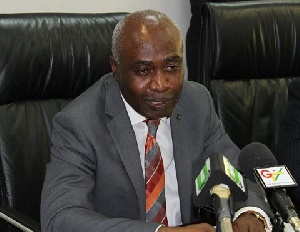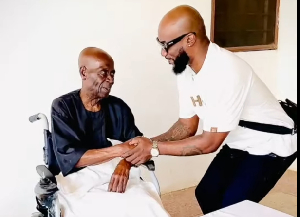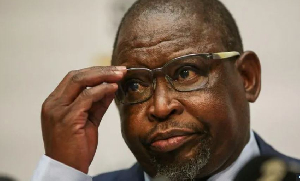The Chief Executive of the National Health Insurance Authority (NHIA), Nathaniel Otoo, has resigned.
This follows a series of resignations hitting state institution due to the change in government. Whereas some previous government appointees are being relieved of their posts or being sacked by the new government, others are resigning honourably.
3news.com sources at the NHIA revealed that his resignation was approved by government last week following the receipt of his letter of resignation.
It is not clear what necessitated his departure and where he is headed next, but Mr. Otoo has told close associates that he wants to “pursue other career opportunities.”
He broke the news of his departure to his management staff last Monday after their bi-monthly meeting.
The outgoing CEO leaves behind a Scheme with a membership of over 11 million members and a utilisation of 31 million.
Mr Otoo, a lawyer by training, joined the NHIA in 2006 from the Social Security and National Insurance Trust (SSNIT) as the first Director of Administration and General Counsel of the Authority and helped establish many of the units and departments of the fledgeling health insurance scheme. He was instrumental in the revision of the NHIS law, Act 650 to Act 852 and has been involved in a wide range of the institution’s decision-making.
In 2013, he was promoted to the position of Deputy Chief Executive of the NHIA in charge of Operations where he supervised five key directorates including Management Information Systems, Quality Assurance, Research and Development, Private Health Insurance, and Provider Payments.
In 2015, he was appointed to act as Chief Executive upon the exit of Mr. Sylvester Mensah. He was later confirmed by the Public Services Commission as substantive Chief Executive Officer of the NHIA.
Employees of the Authority generally describe him as a calm-headed and analytical person, who upon assuming leadership of the Authority purposed to make the NHIA a knowledge-based organisation and a leader in technological innovations to solve problems in the public sector.
In this regard, he oversaw the introduction of the NAVIS member authentication application, a software developed in-house and sold to local banks to assist in their verification of customers who present the NHIS card as a form of identification. The NHIA makes close to a million cedis annually from this innovation. Under his tenure, the NHIA began the paperless registration of members which saves the Scheme about 6 million Cedis annually just by cutting out the use of paper in the NHIS enrolment process.
Mr. Otoo also oversaw the development of the electronic premium banking and e-receipting at NHIA district offices where premiums are electronically receipted and collected by banks as a measure to block loopholes. This system has been reviewed by the Controller and Accountant General and found efficient.
In November last year, a flagship program to enable NHIS card holders to register or renew their membership by choice for two to four years was introduced. The system known as the ‘Multi-year Renewal’ is being expanded to other areas of the country. This is hoped to bring convenience to members and also assist the NHIA make some savings.
As a champion of Universal Health Coverage, Mr Otoo will be remembered as the one under whom the NHIA partnered with the Africa Health Market for Equity program and the Social Protection Ministry to devise an electronic identification system to assess eligibility of the poor and vulnerable for enrolment onto the NHIS. Hitherto, the identification of the poor and vulnerable onto the scheme was arbitrary.
As a way of exacting performance from his staff, he introduced a performance tracking model named the ‘Point Assessment System’ which rated the output of the district and regional offices on key deliverables in an objective mode and rewarded best performers.
In December last year, Mr Otoo launched one of his pet projects for the NHIS, the claim-it application. This is an application for use by health providers to generate and submit claims to the NHIA. It implements and enforces all the necessary claims generation rules and protocols of the NHIS. Hence, all claims submitted for reimbursement are validated by the application. The app ensures due diligence prior to claims submission.
Mr. Otoo worked assiduously to reduce the funding gap of the NHIS with significant success, registering a reversal of the deficit in 2015.
Until his resignation, he was overseeing the development of Mobile Claims Check Code technical requirements and the introduction of a unique provider identification system.
Mr Otoo is quite prominent and respected in the health insurance and UHC fraternity around the world, and though he is holding his next moves close to his chest, sources at the NHIA say he has pledged not to withhold his knowledge and experience from the Authority should he be required at any time to do so.
Under his tenure as Chief Executive, the NHIA was reviewed for the first time by a committee set up by the then president. Mr Otoo was a member of the committee chaired by eminent health economist, Dr Chris Atim. The committee’s report was submitted to the Presidency late last year.
Mr. Otoo leaves a scheme which still has significant challenges, and it is hoped that the new path proposed to be chartered by the new Government will attempt to resolve these.
General News of Monday, 6 February 2017
Source: 3news.com

















